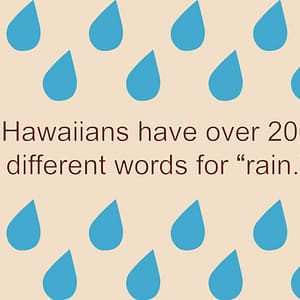How Language Access Can Help Increase Participation in Elections
If an individual cannot understand the ballot, they’re less likely to vote. Ballots and other voting materials can be confusing even for proficient English speakers. For those who have difficulty communicating in English, the voting process is even harder to navigate.
In order to ensure equitable elections in the U.S., more people need access to voting materials in their own language. When implemented properly, language access helps non-English speakers understand the process and cast informed votes—ultimately increasing voter participation. However, translating election materials can be a challenge. Often, election-related terminology is unique to the American voting process, and difficult to communicate in other languages. In this article, we explore the guidelines for making elections accessible to voters with limited-English proficiency (LEP) and offer best practices for translating election-related materials.
The Changing Face of America
For the past 20 years, the number of immigrants who are eligible to vote has been steadily increasing—up 93% since 2000. (Voting-eligible immigrants include people 18 and older who were born outside the U.S. and obtained citizenship through naturalization.) Although the population of U.S.-born eligible voters has also been growing, it has been at a much slower rate—18% over the same 20-year period. Now, as we approach the 2020 presidential election, approximately one out of every ten eligible voters are immigrants.
The Federal Voting Rights Act— Mandating Language Access
With immigrant voters increasing, language access is more relevant than ever. Once, English proficiency tests were a criterion for voting in U.S. elections, so only those with sufficient English language skills could vote. However, in 1975 efforts were made to change things. Section 203 of the federal Voting Rights Act (VRA) was implemented, mandating that local election officials provide language accommodations wherever a jurisdiction meets one of the following two criteria:
- a population threshold where 5% of voting-age citizens are limited-English proficient
- the illiteracy rate among voting-age citizens of the minority language exceeds the national illiteracy rate
When either threshold is met, every aspect of communication of that jurisdiction’s elections must be made bilingual in the minority language. Printed material such as ballots, polling place notices, and voter registration information must be translated. Polling places need to use bilingual poll workers, and voters must be informed about these accommodations.
Section 203 guidelines apply only to certain voters that have suffered a history of exclusion from the political process: Asian-, Alaskan Native-, American Indian-, and Spanish-language minorities. Today, the jurisdictions that meet the guidelines for language assistance are in continual flux. As immigrants become more dispersed around the country, new locales meet the threshold to require language assistance. Meanwhile, as more longer-term residents develop a stronger command of English, other communities are taken off the list. The most recent determinations were completed in 2016, with 263 counties and county-equivalents (out of 3,141 nationwide) warranting accommodations for Spanish, Native, and Asian languages.
While the Voting Rights Act has been reauthorized several times since 1975, the languages accommodated have not changed, despite the country’s growing diversity. Approximately 345,000 LEP Haitian-Creole speakers live in the United States, along with 401,000 LEP Russian speakers, and 456,000 LEP Arabic speakers, none of whom are eligible for Section 203 accommodations. Additionally, 1.9 million Spanish-speaking LEP voters live in communities that fall below the Section 203 mandates.
Increasing Voter Participation With Vote-by-Mail
Vote-by-mail has emerged as a hot topic. Advocates want to expand the use of mail-in ballots in upcoming state primaries as well as the November election so people can cast their votes safely amid the coronavirus pandemic. Five states, Colorado, Hawaii, Oregon, Utah, and Washington already conduct their elections mostly by mail. Twenty-eight others along with the District of Columbia permit voters to submit absentee ballots without requiring a reason.
For those states that do not currently offer widespread vote-by-mail, ramping up in time for upcoming elections requires rapid planning, equipment, and staffing. The federal Election Assistance Commission produced a timeline to illustrate the steps needed to be ready by November 3rd, such as procuring software, training staff, and getting federal post office approval on ballot envelopes.
As states make it easier for people to cast ballots from home, jurisdictions must be careful not to overlook the importance of language assistance. When a voter goes to a neighborhood polling place, they meet face-to-face with a poll worker who signs them in and then lets them cast a ballot. Questions are answered and problems sorted out face to face. Since voters will not have onsite support when casting ballots by mail, voting materials must use clear, comprehensible language. Translations must be accurate and easy to read so LEP individuals can understand their ballots and cast informed votes.
Get in Touch!
Reach out to discuss your next translation project with a member of our team.
Best Practices for Translating Election-Related Materials
For citizens to cast their votes with confidence, election materials (both on-site and vote-by-mail) must clearly convey candidates and positions. Usability, simplicity, and accuracy are key. We’ve provided some best practices for creating friendly, easy-to-understand election-related materials in multiple languages. The guidelines below are based largely on recommendations outlined by the U.S. Election Assistance Commission (EAC).
- Make language placement consistent across materials so that people can find their language quickly.
- When creating optical-scan ballots, do not display more than two languages simultaneously.
- Within the same jurisdiction, ensure all materials adhere to the same design treatments across languages and present both languages in an equivalent manner.
- Produce translations that sound natural to the reader, reflecting the linguistic nuances of the communities they support.
- To optimize readability, minimize the number of fonts and use left-aligned, sans-serif type, in upper- and lowercase.
- Use universally recognized icons such as arrows—provided they are used for instructional purposes only.
- In digital voting interfaces, give voters the opportunity to choose their language preference and toggle between languages.
- Make all translated materials visible to those who need them and make it easy for poll workers to identify the language.
How Everyday English Results in Clear Translations Across Languages
Before starting translation, it is important that the original English materials are developed with clear, everyday writing that can be easily understood by voters with mixed reading levels. The quality of the original text directly impacts the quality of the translations. When the original is written with complex language or obscure terminology, the translated versions will also be harder for voters to read. Plain English also benefits English speakers, by improving the readability of the original text.
Georgia Tech Research Institute analyzed the advantages of plain-language ballots, testing them with English-, Spanish-, and Chinese-speaking voters. Voters showed an overall preference for plain language, and the study found that voters using plain-language ballots made fewer errors in undervotes, write-ins, and overvotes compared with traditional-language ballots.1
Translating Specialized Terminology
Election materials use terminology that is unique to the American voting process, including concepts that cannot be easily conveyed in other languages. Translating these materials requires cultural sensitivity. Linguists must consider the context of the text as well as the way it will be interpreted by the target audience.
As an example, the Eriksen team ran into some challenging terminology while supporting New Jersey’s Middlesex County elections. New Jersey is home to 110,000 Gujarati speakers—and to help make the county’s new touchscreen voting machines accessible, Eriksen translated the screen text and recorded audio content in Gujarati.
One concept that threw the translators for a loop was “write-in” candidate. Immigrants from India may not recognize this term, as India does not permit voters to pencil in a candidate who is not on the ballot. To counter this, the translation explains the concept of a write-in candidate, as simply and succinctly as possible: “candidate other than on the ballot.”
Another problematic term was “vote contest.” It had to be made clear that each position being contested in the election is one “contest.” For example: “You must vote one contest before you can cast your ballot.” In this case, the translation explains that the voter must first select the “position” (contest) in which they want to cast a vote, and only then can they actually cast their vote.
Transliteration
Transliteration is sometimes used to communicate the names of candidates and parties into a language that has a different writing system, such as Russian, Greek, or many Asian languages. It phonetically expresses the way the word is pronounced in the source language (English, for example) using the alphabet of the target language (e.g. Chinese). While some states provide their own guidelines on transliteration, the EAC recommends the transliteration of names and parties when creating ballots in Asian languages. If transliteration is used, the EAC advises using only the most standard characters, and avoiding those that have overly positive or negative meanings when describing candidate names.
Making Elections Accessible to People With Disabilities
There are different ways for individuals with disabilities to cast their vote, including:
- vote-by-mail systems, early voting, and absentee ballots
- physical assistance at the polls
- braille and audio ballots for the blind or visually impaired
- touch screens
In Eriksen’s work with Middlesex County, the team translated on-screen text and recorded audio for sip-and-puff assistive technology, which helps quadriplegic individuals vote independently. When a sip-and-puff device is attached to a vote-tabulation machine, the voter puffs to hear the candidates’ names, and sips to select an individual and cast their vote.
Here, the team was again challenged when terminology used to describe the device components did not have a Gujarati equivalent. For example: “You have activated a two-position controller such as a rocker paddle or sip and puff device.” Sometimes, when providing instructions using terms that do not exist in the target language, the English terms are necessary to properly reference the device components.
However, in this case, the entire interface was programmed into Gujarati, and users would not need to reference the English nomenclature. Therefore, the team could use transliteration for both the onscreen text and audio in cases where Gujarati terms did not exist.
Featured Services
Learn more about…
How Glossaries Can Ensure Consistent Use of Terminology
A glossary can serve as a resource to help ensure that important, election-related terms such as provisional ballot, referendum election, and consolidated precinct are used consistently across languages. A glossary compiles key terminology in the source language and the approved translations for those terms in the target languages. This reference ensures that translators use the defined terms correctly each time they appear.
A glossary is not only valuable for translation. Once compiled, it can also help voters understand election-related words and phrases. The EAC makes glossaries available to the public on their website in Chinese, Japanese, Korean, Spanish, Tagalog, and Vietnamese. In addition, they offer election phrases at a glance, in the six languages mentioned above, plus Hindi, Bengali, and Khmer.
Ongoing Community Engagement
Engagement doesn’t stop with translation. Even after language resources have been put in place, the EAC recommends implementing ongoing efforts to connect with language-minority communities. Continued engagement eases bilingual poll worker recruitment efforts and, ultimately, makes the language assistance program more sustainable.
- Actively recruit bilingual poll workers, who can support both English- and non-English-speaking voters.
- Utilize mobile-friendly, multilingual websites so visitors can access resources in the language of their choice.
- Make announcements over community radio and social media, in the language spoken in the community.
- Place notices in community newspapers.
- Develop partnerships with community organizations and conduct outreach at local events.
Empowering All Eligible Voters to Participate in Elections
Across the United States, over 25 million U.S. residents have limited proficiency speaking the English language. All of these voters deserve accessible, accurate, secure elections. However, without accommodations and language assistance, many voters cannot cast an informed ballot. By implementing effective translation and language resources, the United States can increase access to the polls, so that all people can vote independently, confidently, and securely.
 Named to the 2024 Inc. 5000 list of fastest-growing companies and ranked among the world’s top 100 language service providers by CSA Research
Named to the 2024 Inc. 5000 list of fastest-growing companies and ranked among the world’s top 100 language service providers by CSA Research

